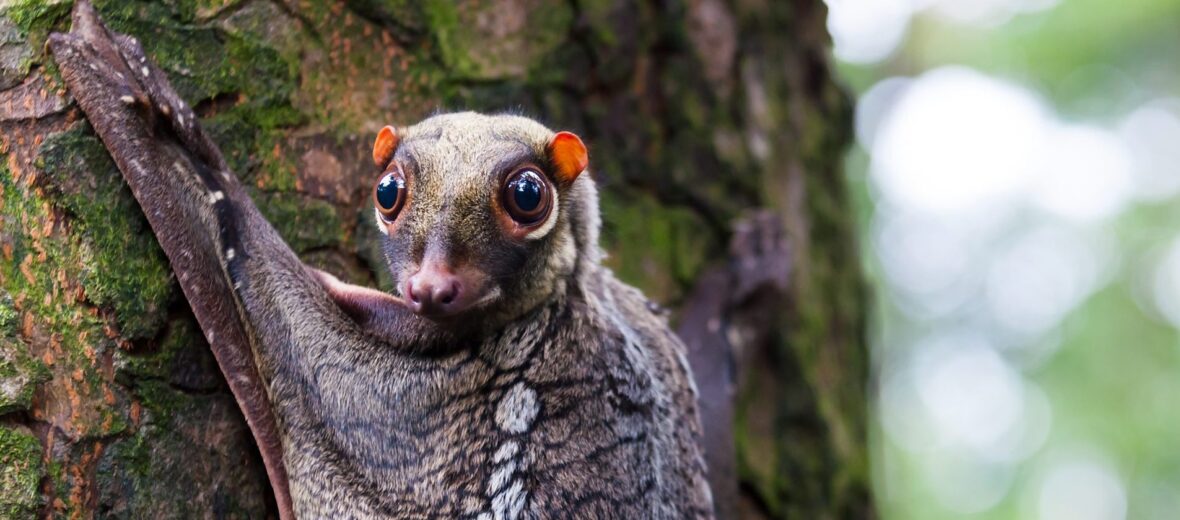
The Sunda colugo, aka the flying lemur is a freaky cool critter from Southeast Asia and on some of the Philippine Islands. More specifically from Indochina and southern Thailand to peninsular Malaysia, Burma, Singapore, and the Indonesian islands of Sumatra and even Java. They also occur throughout Borneo. Even though they are sometimes called flying lemurs, they aren’t actually lemurs at all and they don’t technically fly. Lemurs only live in Madagascar and the only known flying mammals are bats. These unique critters are known for their gliding capabilities. This article is on special request.
First the Stats…
Scientific name: Galeopterus variegatus
Weight: Up to 4.4 lbs.
Length: Up to 16 inches plus their tail
Lifespan: Up to 15 years
Now on to the Facts!
1.) The colugo prefers tropical rainforest environments.
2.) “Colugo” means arboreal gliding mammal.
3.) These creatures are strictly arboreal (live their lives in trees). They never venture to the ground, intentionally.
4.) Even though they spend their whole lives in trees, they are actually awkward climbers. They move about the trees by small hops and hang on with tiny but sharp claws. They also have webbed feet. The soles of which form sucking discs to aid in hanging on.
5.) The membrane that allows them to glide is called a patagium. They can extend this patagium to about 2.3 feet.
But wait, there’s more on the Sunda colugo!
6.) They have 34 sharp canine-like teeth.
7.) Colugos are nocturnal (active at night).
Did you know…?
These amazing critters can glide up to 230 feet from tree to tree!
8.) The colugo is herbivorous (eats plant matter).
9.) Their primary predator is the Philippine eagle.
10.) A colugo provides ecological functions in that they disperse seeds and provide food for predators.
Now a Short Sunda Colugo Video!
Also, check out the Critter Science YouTube channel. Videos added frequently!
Want to suggest a critter for me to write about? Let me know here.



